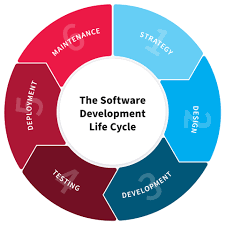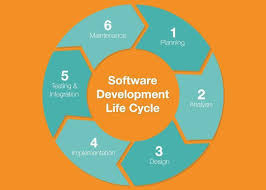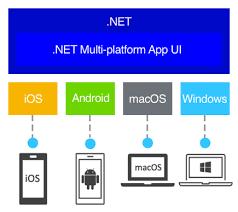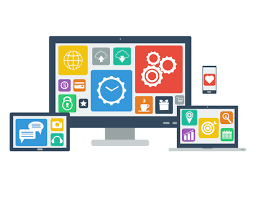The True Cost of Software Development: Understanding Expenses and Investments
The Real Cost of Software Development
Software development is a crucial investment for businesses looking to stay competitive in today’s digital landscape. However, determining the true cost of software development can be complex and involves more than just the initial price tag. Let’s explore the various factors that contribute to the overall cost of software development.
Development Time
One of the primary factors that influence software development cost is the time it takes to design, develop, test, and deploy the software. The longer the development process, the higher the cost. Factors such as project complexity, required features, and team expertise can all impact development time.
Team Expertise
The expertise and experience of the development team also play a significant role in determining software development costs. Highly skilled developers may come at a higher price but can deliver a more efficient and robust product in less time.
Technology Stack
The choice of technology stack used in software development can also affect costs. Some technologies may require specialized knowledge or licensing fees, which can add to the overall cost of development.
Maintenance and Support
After the initial development phase, ongoing maintenance and support are essential for keeping the software up-to-date and functioning smoothly. Budgeting for post-launch support is crucial in accurately estimating software development costs.
Scalability and Future Upgrades
Businesses should consider scalability and potential future upgrades when estimating software development costs. Building a flexible architecture that can easily accommodate growth and new features can help reduce long-term expenses associated with software updates.
Quality Assurance
Incorporating thorough quality assurance processes into software development is essential for ensuring a bug-free product that meets user expectations. Investing in QA testing upfront can help prevent costly rework later on.
Conclusion
While upfront costs are an important consideration when budgeting for software development, businesses must also account for various other factors that contribute to the overall cost over time. By carefully evaluating these factors and working with experienced professionals, businesses can make informed decisions that lead to successful software projects within budget.
Maximizing Value: The Benefits of Investing in Software Development
- 1. Allows businesses to create customized solutions tailored to their specific needs.
- 2. Enhances operational efficiency and productivity through automation and streamlined processes.
- 3. Enables businesses to stay competitive by leveraging innovative technologies.
- 4. Provides scalability options for future growth and expansion.
- 5. Improves customer satisfaction by delivering user-friendly and feature-rich software products.
- 6. Offers a high return on investment by increasing revenue opportunities and cost savings in the long run.
Understanding the True Costs of Software Development: Initial Investment, Overruns, and Hidden Expenses
1. Allows businesses to create customized solutions tailored to their specific needs.
Software development cost offers the significant advantage of enabling businesses to create customized solutions tailored to their specific needs. By investing in software development, companies can design and build applications that address their unique requirements and challenges. This customization allows businesses to optimize their processes, enhance efficiency, and deliver better services to their customers. Tailored software solutions empower organizations to stand out in the market by offering distinct capabilities that align closely with their strategic objectives and operational workflows.
2. Enhances operational efficiency and productivity through automation and streamlined processes.
Software development cost can be seen as a valuable investment that enhances operational efficiency and productivity by introducing automation and streamlining processes. By developing custom software solutions tailored to specific business needs, organizations can automate repetitive tasks, eliminate manual errors, and optimize workflows. This results in increased efficiency, reduced operational costs, and improved overall productivity as employees can focus on more strategic tasks while routine processes are handled seamlessly by the software.
3. Enables businesses to stay competitive by leveraging innovative technologies.
Investing in software development allows businesses to remain competitive by harnessing cutting-edge technologies that drive innovation. By developing custom software solutions, companies can streamline operations, enhance customer experiences, and adapt quickly to market changes. This adaptability not only positions businesses to meet evolving consumer demands but also enables them to differentiate themselves from competitors. Leveraging the latest technological advancements ensures that a business remains at the forefront of its industry, fostering growth and long-term success in an ever-evolving digital landscape.
4. Provides scalability options for future growth and expansion.
Software development cost provides scalability options for future growth and expansion. By investing in software development, businesses can build scalable solutions that can easily adapt to changing needs and accommodate future growth. This flexibility allows companies to expand their operations, add new features, and serve a growing customer base without incurring significant additional costs. Scalability in software development ensures that businesses can stay competitive and agile in a rapidly evolving market landscape.
5. Improves customer satisfaction by delivering user-friendly and feature-rich software products.
One significant advantage of software development cost is that it enhances customer satisfaction by providing user-friendly and feature-rich software products. By investing in the development of intuitive interfaces, robust functionalities, and innovative features, businesses can meet the evolving needs and preferences of their customers. Delivering high-quality software solutions that are easy to use and offer valuable features not only enhances the overall user experience but also fosters customer loyalty and positive brand perception.
6. Offers a high return on investment by increasing revenue opportunities and cost savings in the long run.
One significant advantage of software development cost is its ability to offer a high return on investment. By investing in software development, businesses can increase revenue opportunities and achieve cost savings in the long run. Custom software solutions can streamline operations, improve efficiency, enhance customer experiences, and open up new revenue streams. Additionally, tailored software can help businesses reduce manual tasks, minimize errors, and optimize processes, leading to significant cost savings over time. Ultimately, the initial investment in software development can result in substantial returns by driving growth and profitability for the business.
High initial investment
High initial investment is a notable con of software development cost. Developing software can demand a substantial upfront financial commitment, particularly for intricate projects or when employing specialized technologies. This initial investment can pose a challenge for businesses, especially startups or small enterprises with limited budgets, as it may require careful planning and allocation of resources to ensure the project’s success without exceeding financial constraints.
Cost overruns
Cost overruns are a significant con of software development cost, as projects often exceed the initial budget due to various factors such as unforeseen challenges, scope changes, or delays in development. These unexpected circumstances can lead to increased expenses, impacting the overall financial viability of the project. Managing and mitigating cost overruns require careful planning, effective communication, and proactive risk management to ensure that software development stays within budget constraints and delivers value to stakeholders.
Hidden costs
Hidden costs associated with software development can significantly impact the overall budget of a project. Expenses such as ongoing maintenance, technical support, licensing fees, and future upgrades are often overlooked during the initial planning stages but can add up quickly over time. These hidden costs can catch businesses off guard and strain their financial resources if not properly accounted for in the initial budgeting process. It is crucial for organizations to consider these additional expenses when estimating the true cost of software development to avoid budget overruns and ensure the long-term sustainability of their software solutions.










